After disastrous performances in the recent matches, Bayern Munich sacked their head-coach Niko Kovac. Under the Croatian coach, Bayern often failed to break down deep defensive blocks. And in addition to that, Kovac’s side even started to struggle with defensive issues in this season.
In this tactical analysis, we explain Kovac’s tactical problems at Bayern that led to his dismissal.
Missing half-space occupation
Bayern‘s attacking philosophy revolved around attacking down the wings under Kovac. But even if attacking down the flanks, it is useful to position players in more central areas.
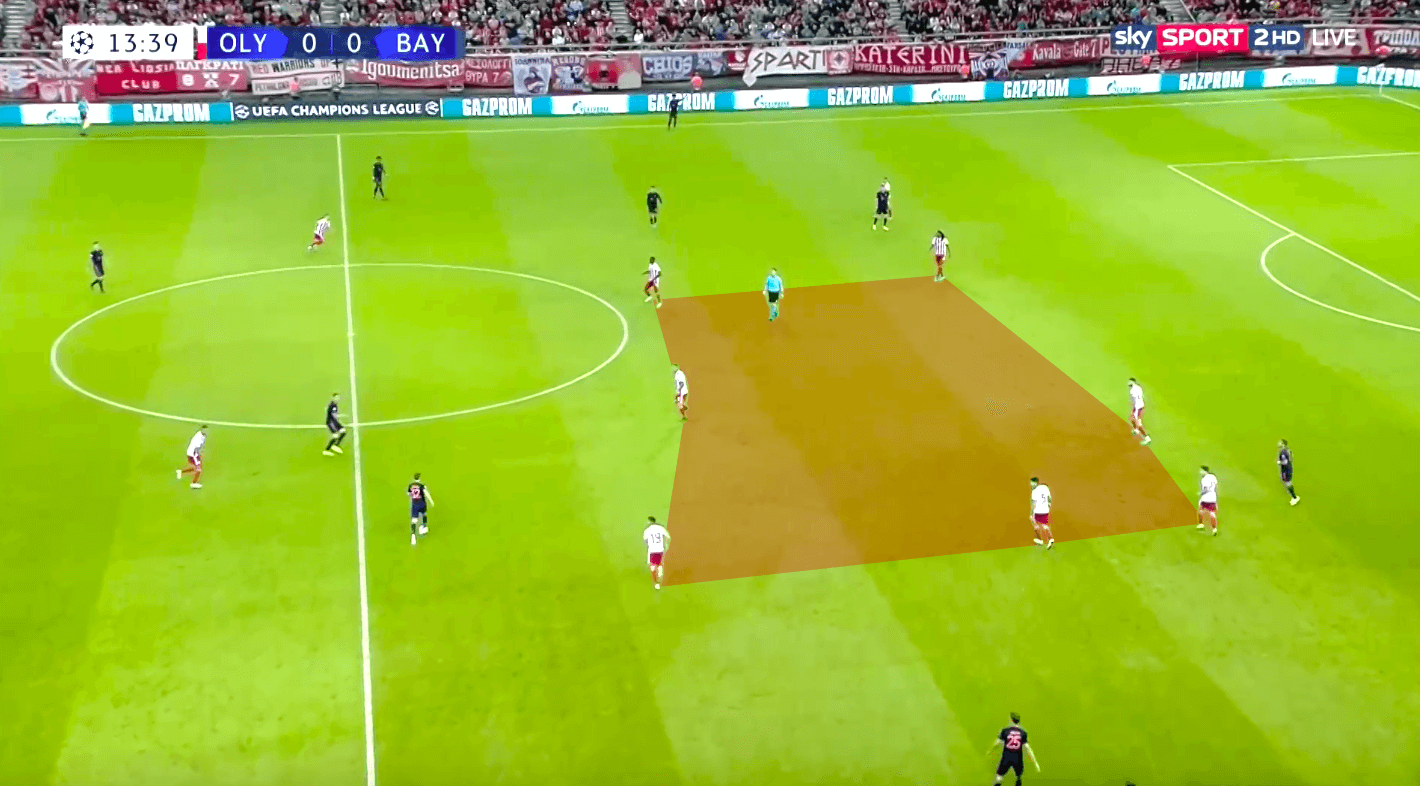
That would occupy opposition players within the centre and therewith create space on the wings. Moreover, Bayern’s wingers could get immediate support within the half-space once receiving the ball. Without this support, Bayern’s winger are often outnumbered as opposition teams are often well prepared for supporting their full-backs on the wing.
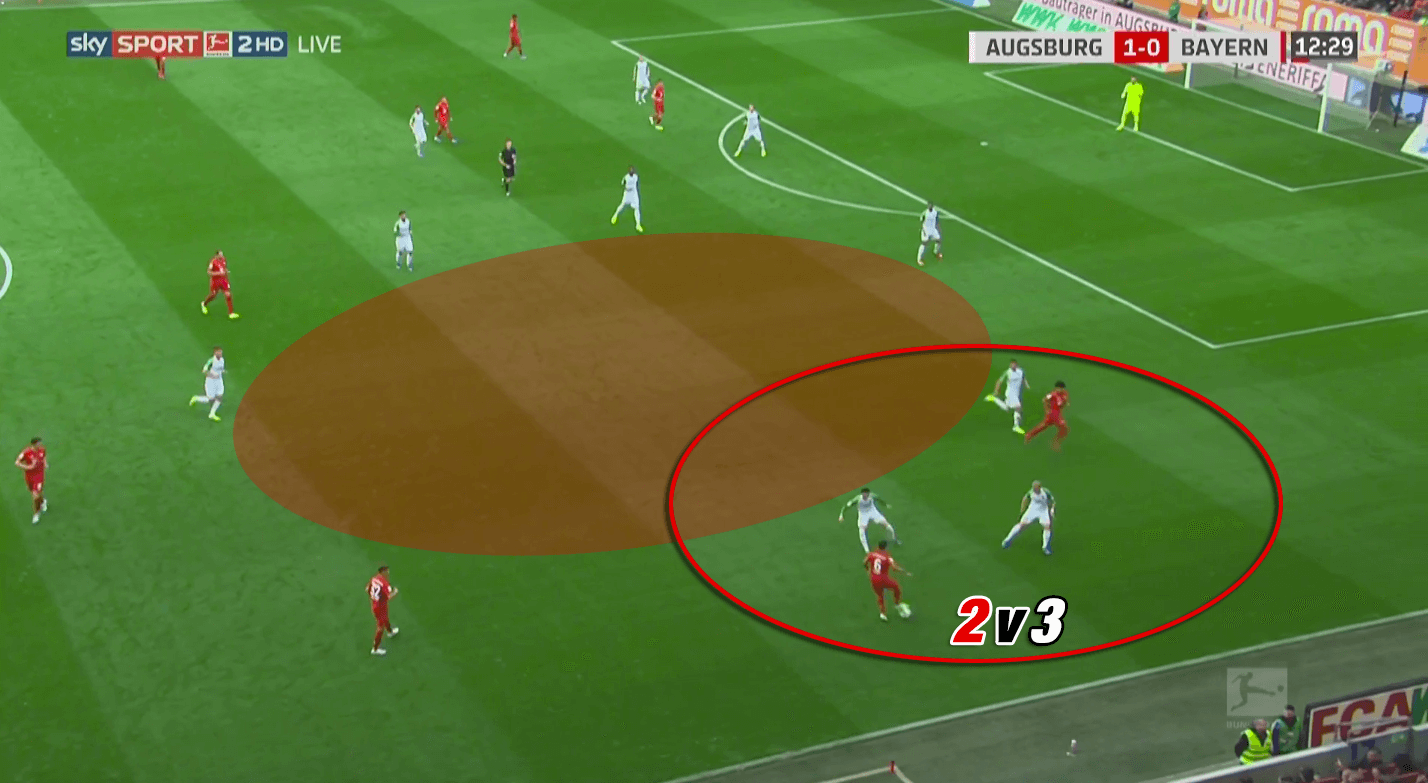
But the structural issues of Bayern already began in the build-up phase. When playing in a 4-3-3 system, Bayern’s advanced midfielders would position themselves high up the pitch while the single pivot played close to the central defenders. That is not a bad concept in general, since it creates space for the build-up players to carry the ball into.
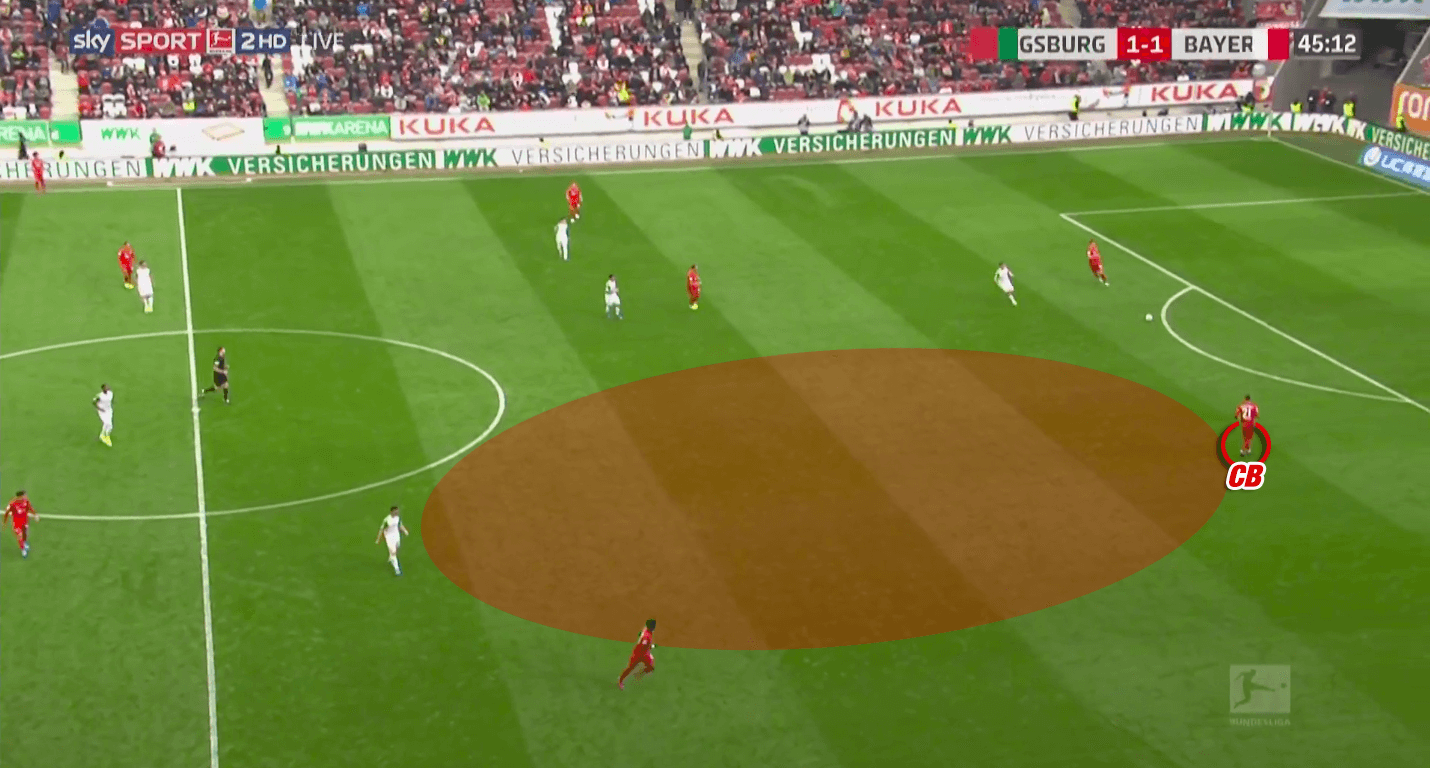
However, this strategy did not suit the abilities of Bayern’s centre-backs who rather played the ball out to their full-backs instead of utilising the free space.
As a consequence, advanced midfielder Thiago often dropped into deeper positions again to collect the ball.
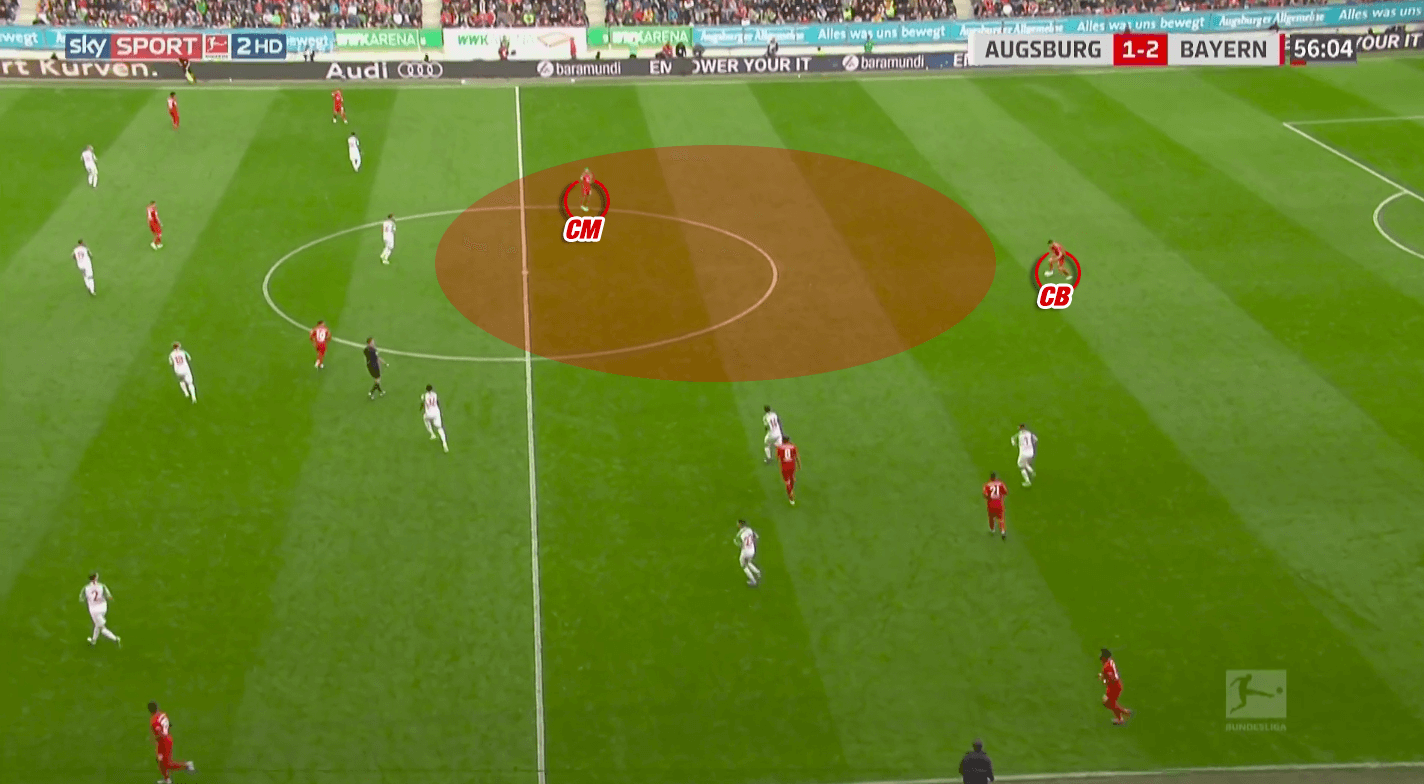
But this resulted in the fact Bayern missed a player between the lines. Often Bayern would therefore leave the ball far half-space unoccupied which made it impossible for them to switch play without playing backwards. In addition to that, the opposition can keep a compact shape on the ball near side due to the fact that there is no risk in being outplayed with a pass into the ball far half-space.
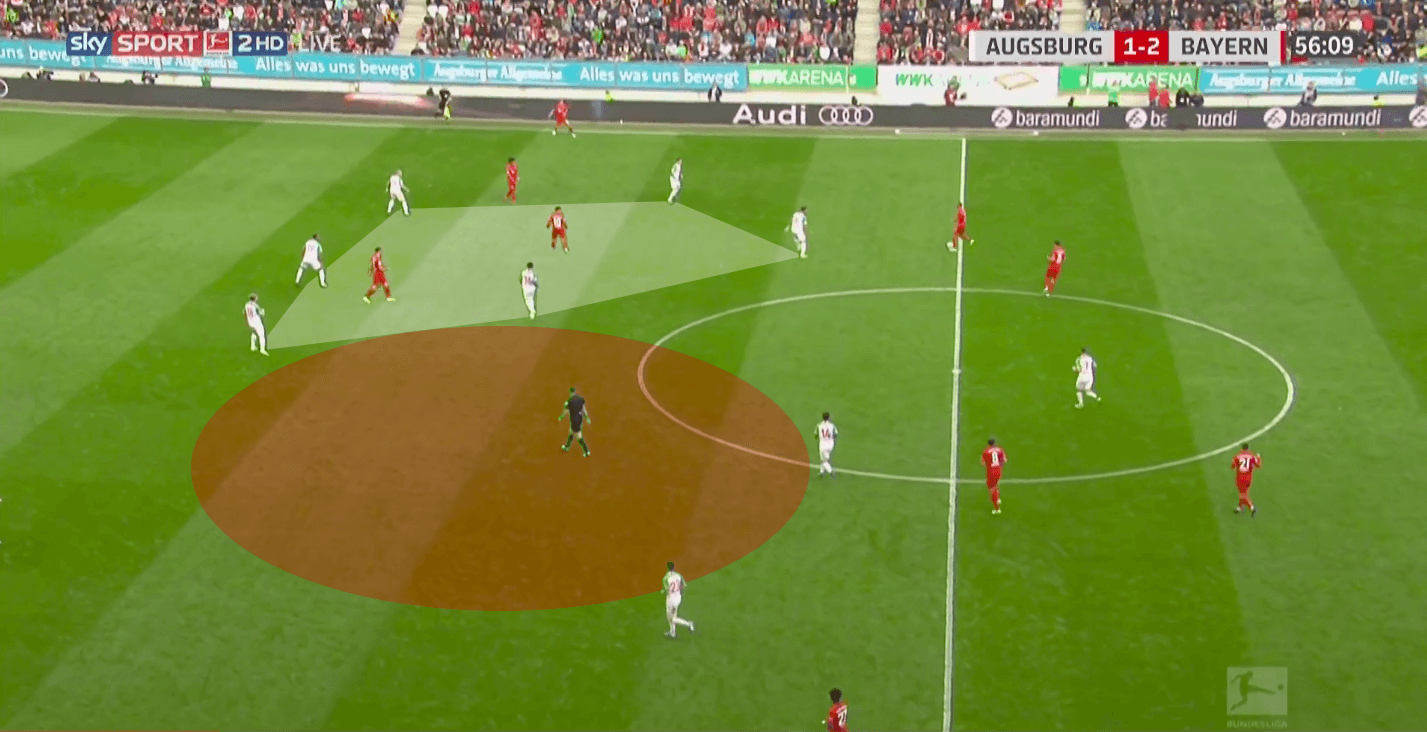
The off-ball movement seemed to depend on the players’ preferences and there were only few principles to be recognised. This lack of influence by head-coach Kovac was one of the main reasons for his dismissal.
U-shape – missing occupation of space between the lines
But it was not only the missing occupation of the ball near half-space. Bayern’s main issue in possession revolved around their attacking shape. Under Kovac, the German champion often failed to occupy any space between the lines.
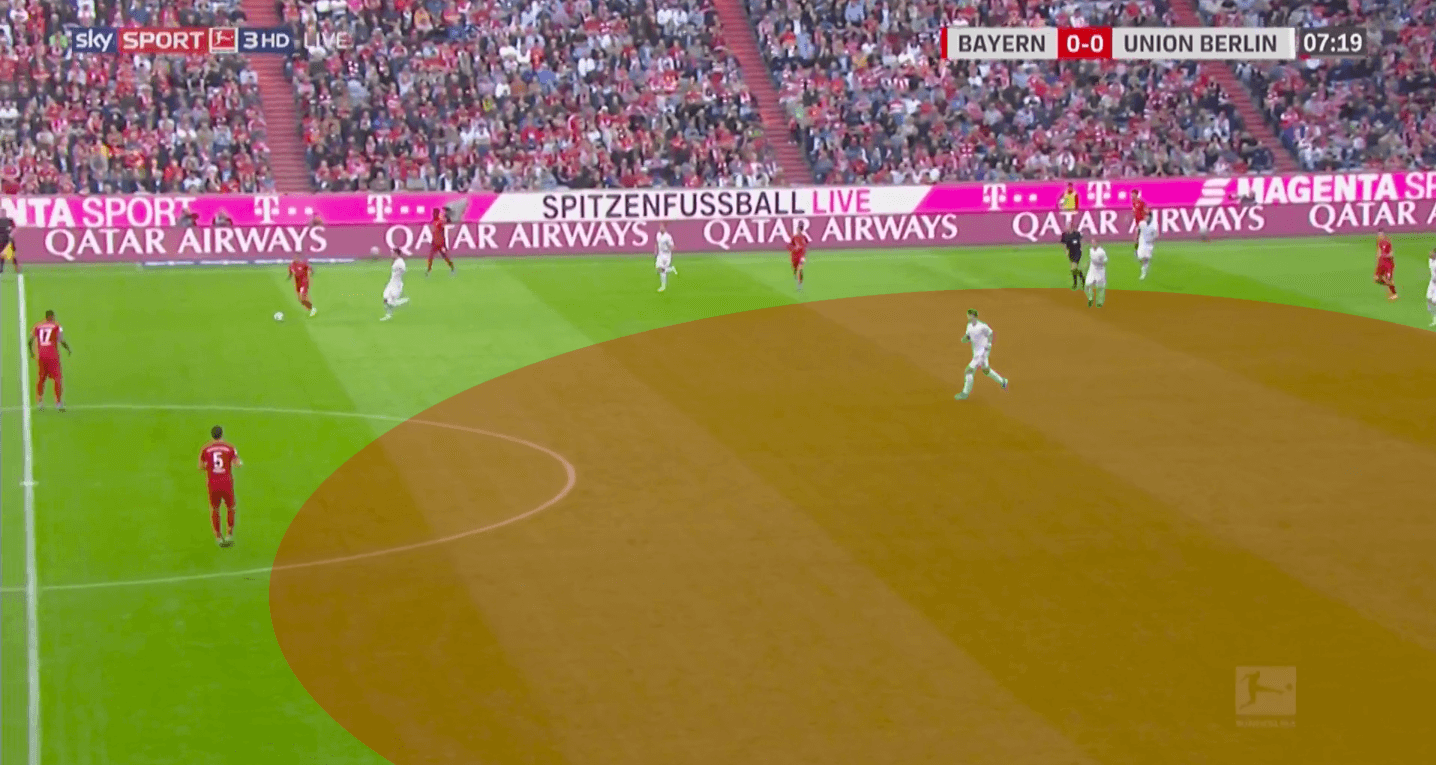
Bayern, therefore, often attacked in a U-shape. This is not only disadvantageous for breaking lines and penetrating the opposition block but it also entails several disadvantages for counter-pressing which will be explained at a later stage of our analysis.
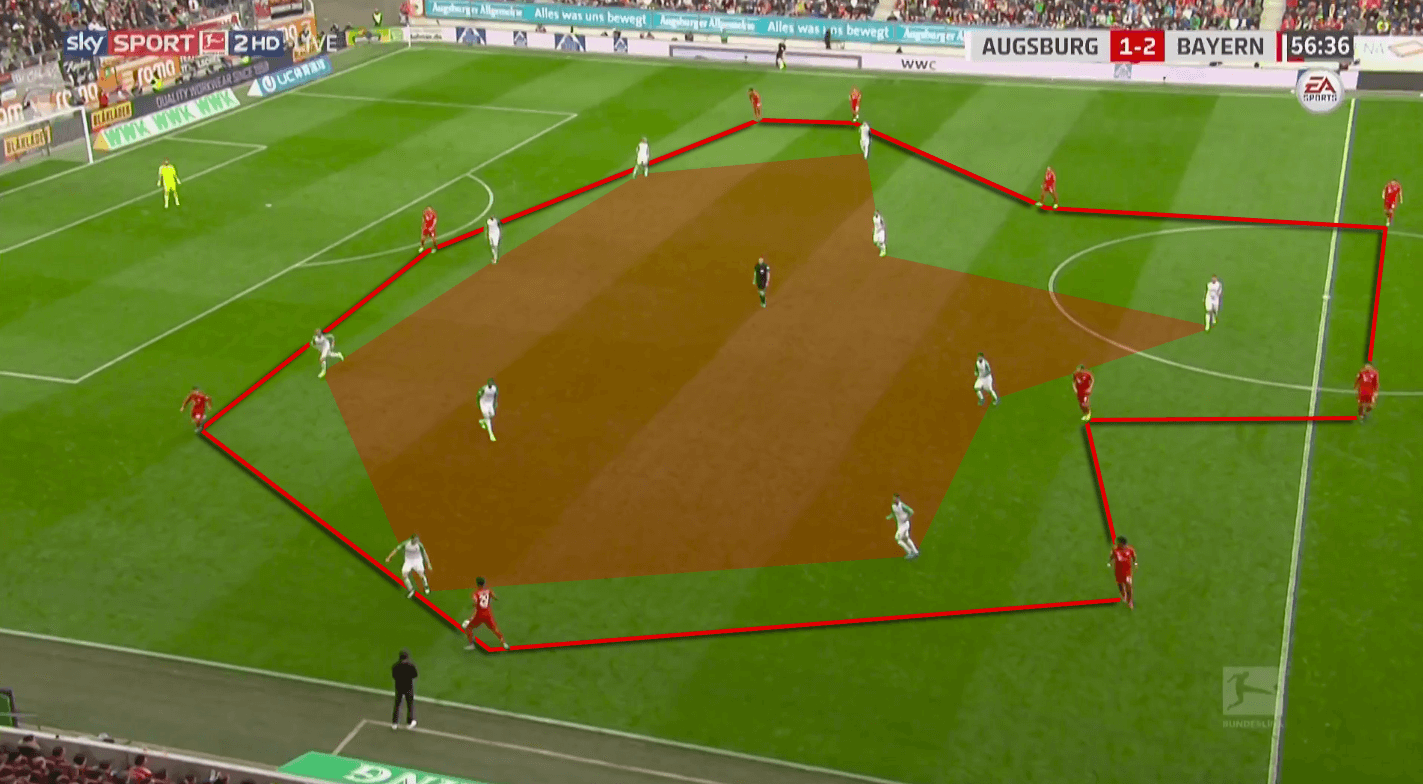
The U-shape also disabled Bayern to escape from pressure and switch play if the opposition pressed them on one side. As a consequence, Bayern chose to finish the attack on the side where it started too often. This resulted in attacks which missed the needed patience to break down a defensive block. Often, Kovac’s side would put in crosses from wide areas way too early. That comes along with two negative side effects. Firstly, some Bayern attackers have not taken up positions to threaten the opposition goal or win the second ball. Secondly, the opposition is still organised enough to defend these crosses.
The predictability of Bayern’s attacking approach created a huge dependency on the individual brilliance of their attacking trio.
Where is the counter-pressing?
The mentioned U-shape also had another negative influence on Bayern’s tactics. A quick counter-pressing which enables top teams to dominate the opposition is impossible without a compact shape. And the U-shape leads to both, a lack of vertical as well as horizontal compactness since it creates a big hole within the centre of the pitch.
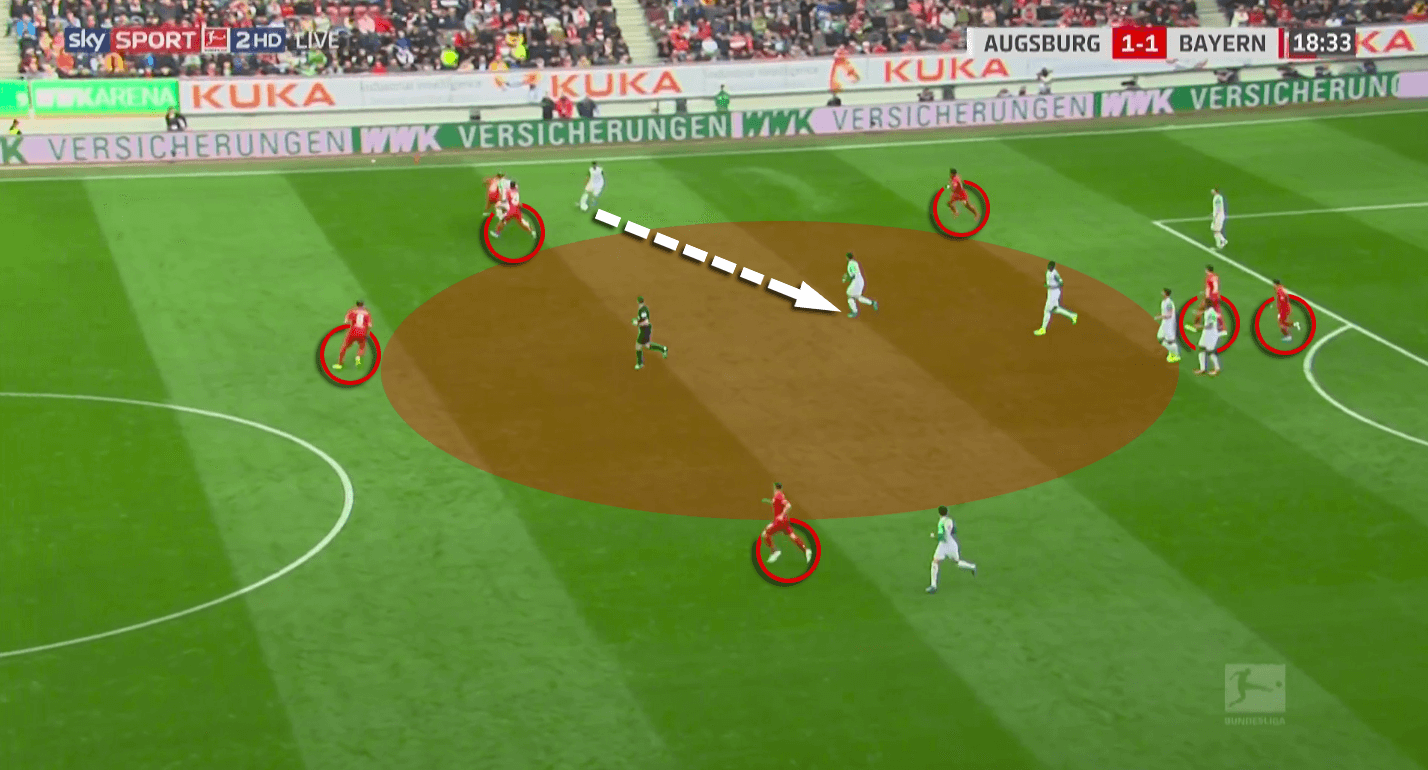
Therefore, when Bayern lost possession, their defensive department often needed to drop in order to secure their own goal. Sometimes Bayern’s defenders even got outnumbered on the ball near side, as they lacked support from the players that were positioned on the ball far side when they lost the ball.
And even in central areas the distances between Bayern players were often too far to execute an aggressive counter-pressing.
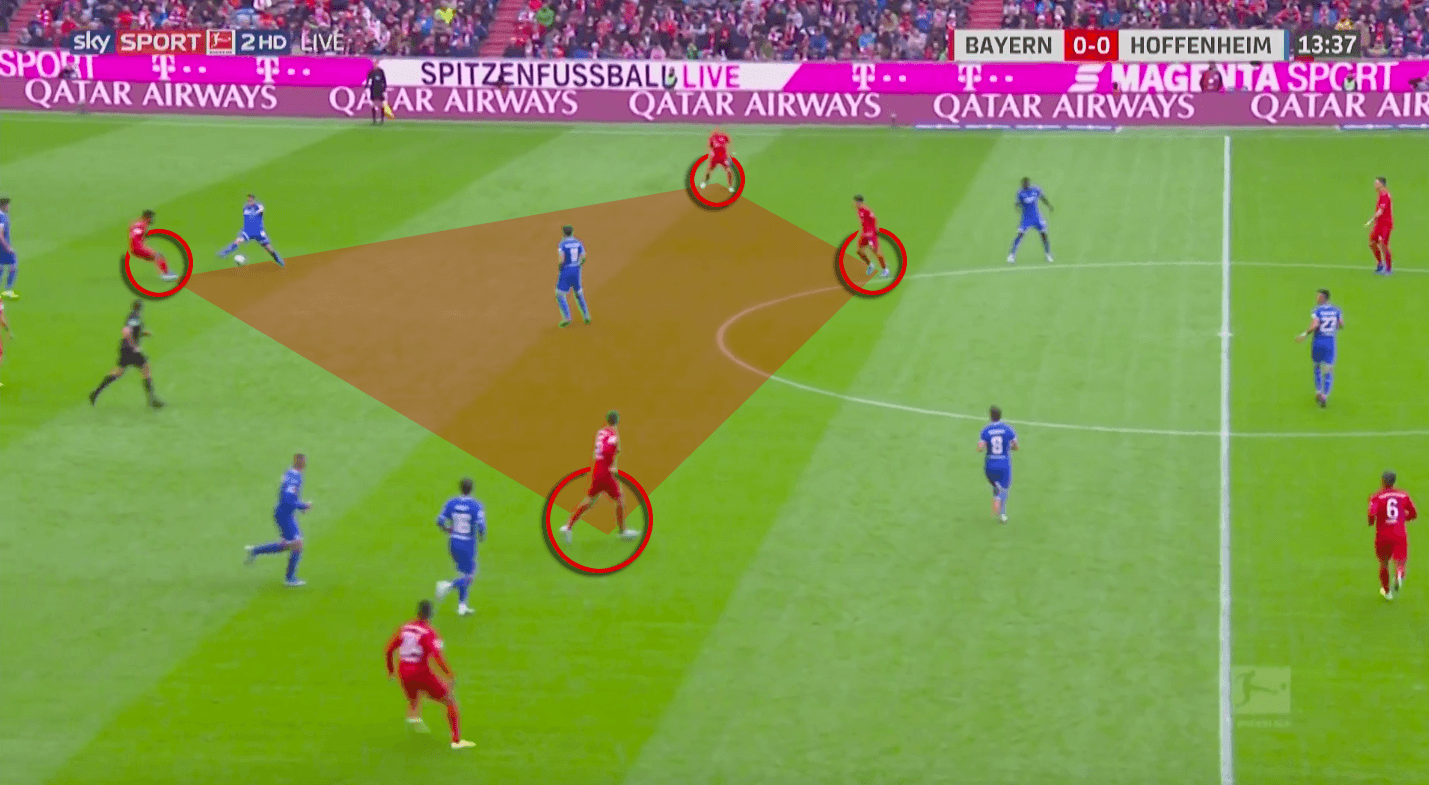
Bayern’s shape decreased their own chances on penetrating the opposition block after quickly regaining the ball while it increased the chance of getting towards the goal for the opposition.
Defensive issues
This Bundesliga campaign, Bayern suffered a huge decrease in defensive stability. Compared to an average of 0.91 xGA in 2018/19, they averaged 1.24 xGA so far this season. That was mainly due to poor defensive organization as well as a press which seemed half-hearted at times.
When pressing high up the pitch, their midfielders moved towards one side of the pitch. That left the central space in front of their back line unoccupied. Whenever the opposition was capable of outplaying the press, they could utilise the free space in the centre.
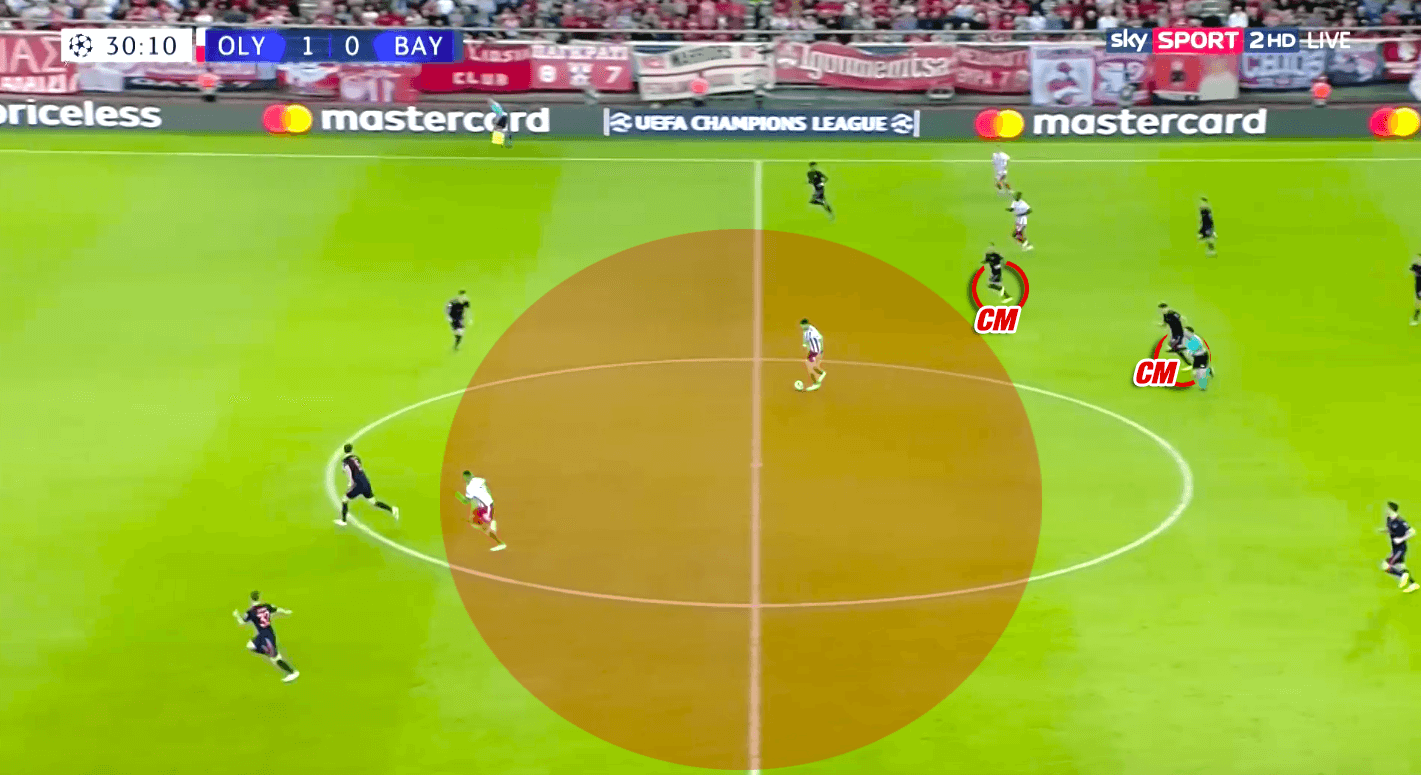
When Bayern’s defensive department dropped in these cases, their wide forwards sometimes missed the willingness to track back. That often allowed the opposition to create promising opportunities by overloading Bayern’s full-backs. One common theme were overlapping runs by the opposition full-backs to create a 2v1 situation as displayed below.
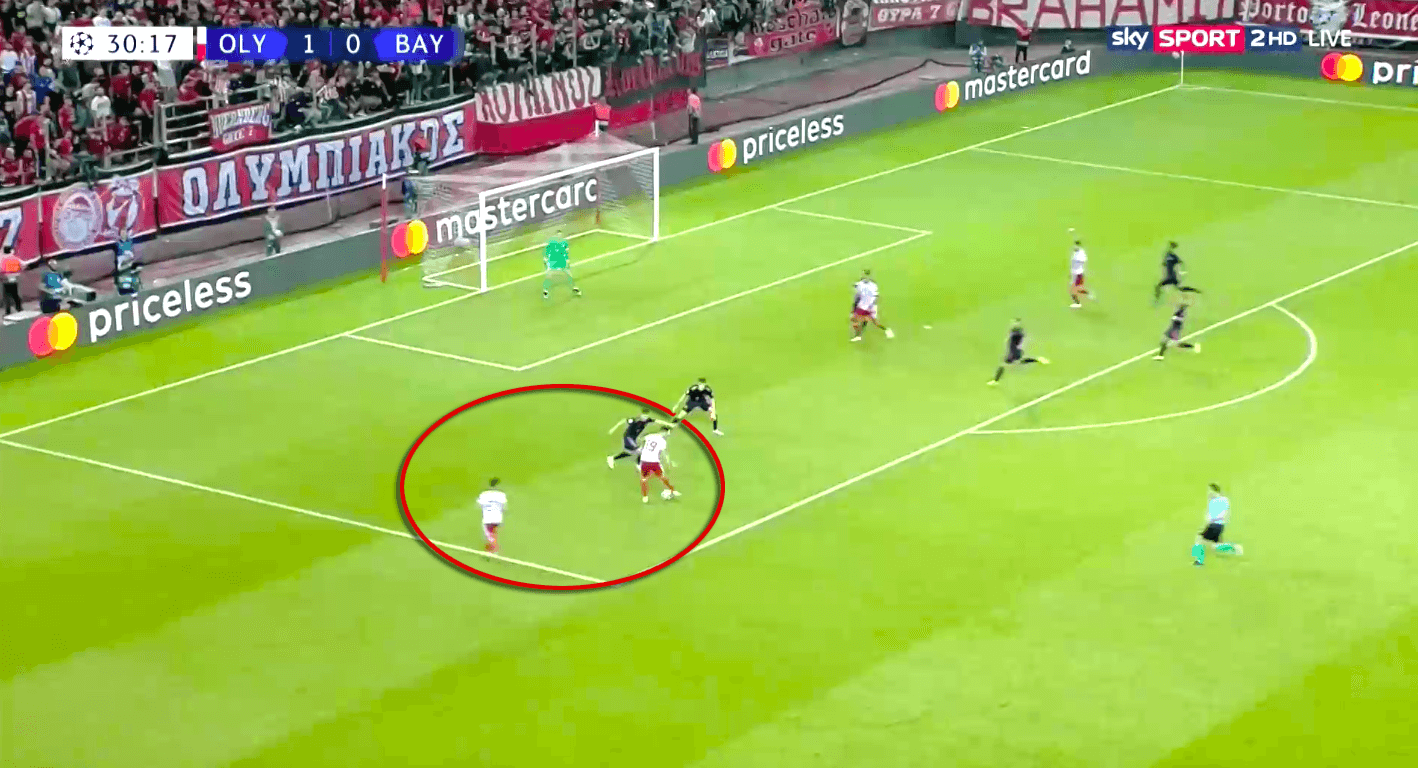
But in general, Bayern’s defensive issues were also caused by the insufficient counter-pressing. This led to more attacking opportunities for the opposition than Bayern allowed in the past.
Conclusion
As our analysis showed, Kovac seemed to be unable to solve Bayern’s issues in possession. Especially the poor attacking structure decreased their attacking threat. Because of a missing occupation of areas between the lines, Bayern’s focus on wing attacks was way too predictable. Moreover, their U-shape disabled Bayern to execute a counter-pressing and, as a consequence, Bayern lost their dominance of yesterdays under Kovac.
It will be interesting to see whether Bayern’s next head-coach is capable of lending the German record champion a more structured and threatening attacking approach.
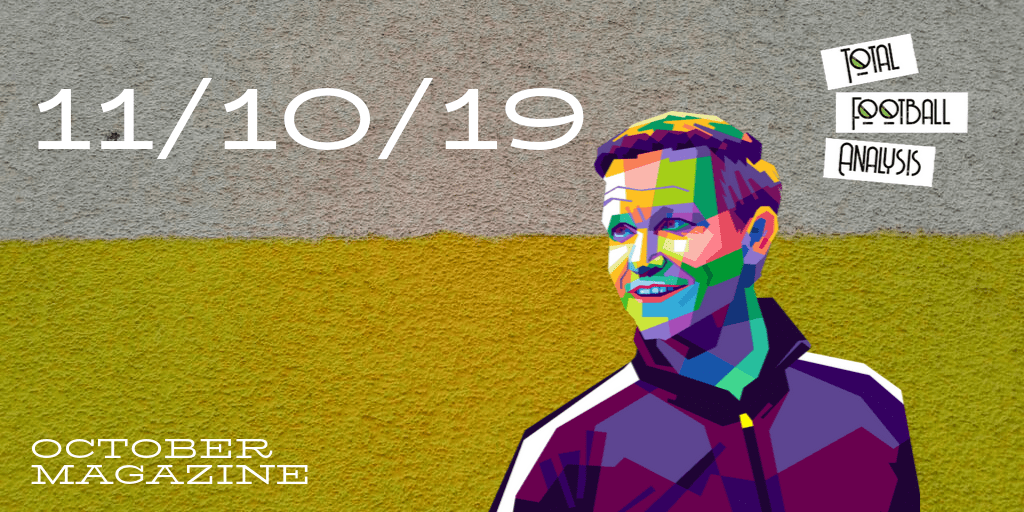
If you love tactical analysis, then you’ll love the digital magazines from totalfootballanalysis.com – a guaranteed 100+ pages of pure tactical analysis covering topics from the Premier League, Serie A, La Liga, Bundesliga and many, many more. Buy your copy of the October issue for just ₤4.99 here




Comments